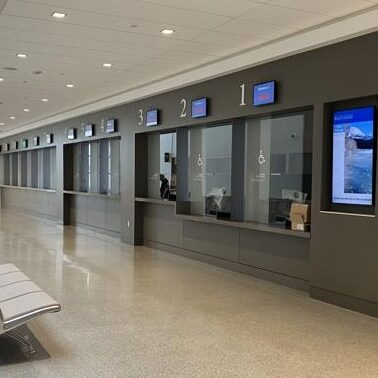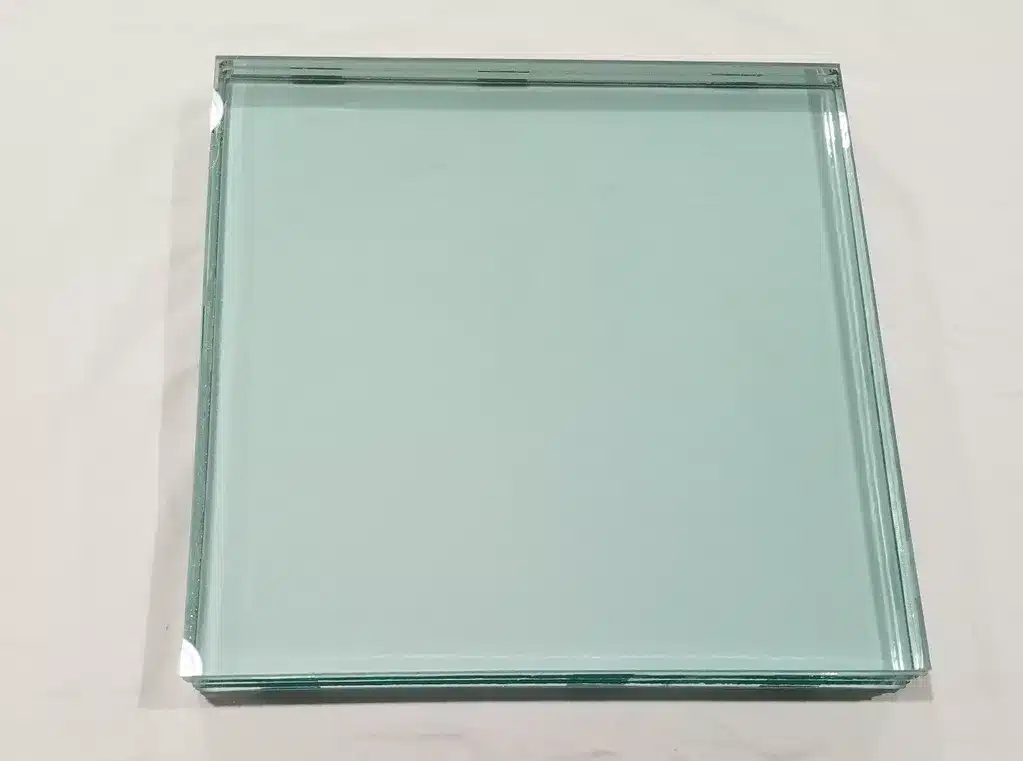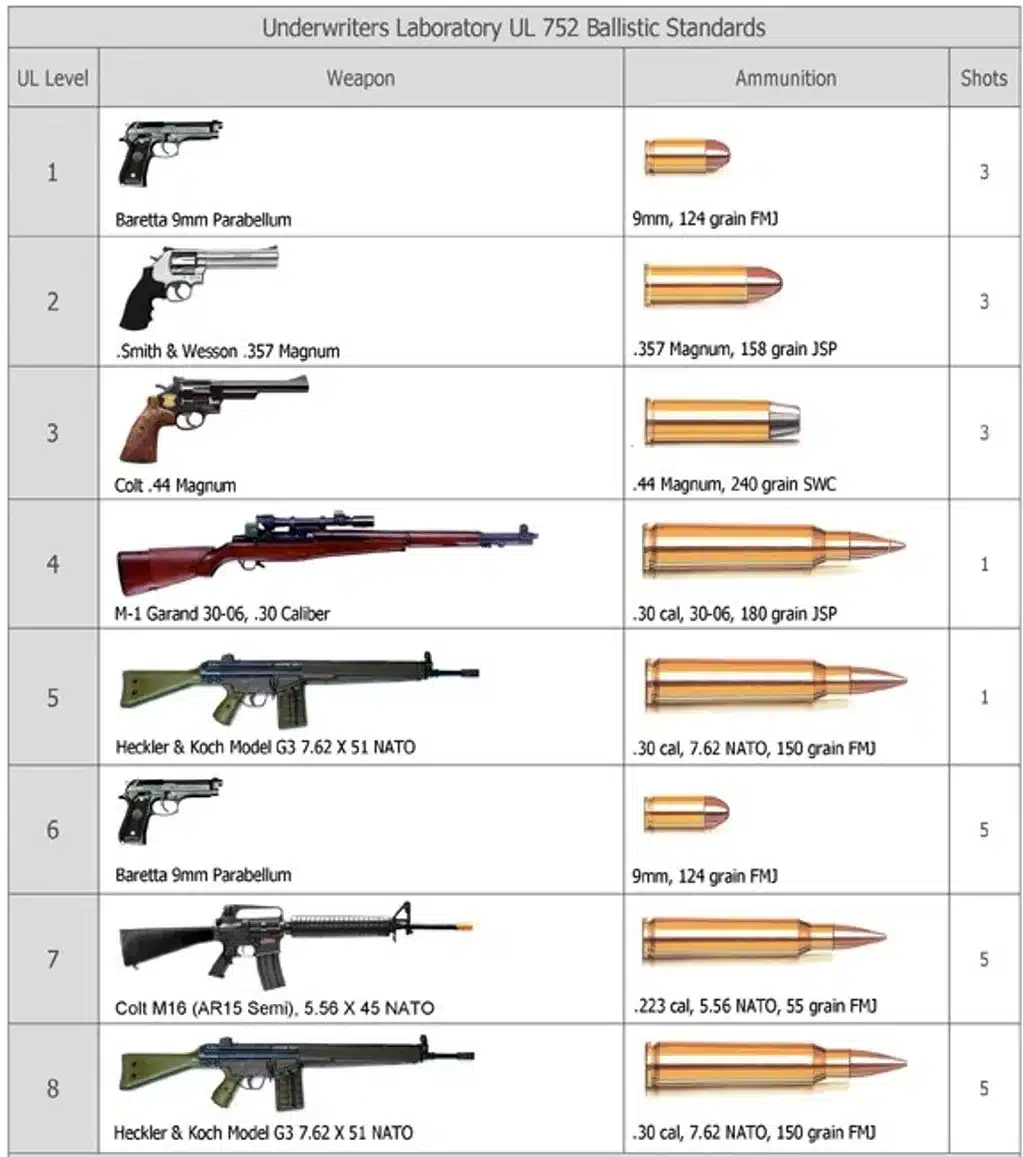

Ready to secure your building with the best in bullet-resistant glazing?
👉 Call now or request a quote online – Our team is ready to help you choose the right glass for your needs.
Bullet-resistant glazing is made by layering glass and polycarbonate to stop bullets from passing through. It absorbs impact and prevents dangerous glass fragments (spall) from reaching the protected side.
It looks like regular glass—clean and transparent—but is much thicker due to its layered construction. When shot, it traps the bullet and breaks internally, remaining mostly intact for safety.
Level 3: 1.25″ thick, resists 3 shots from a .44 Magnum (ideal for schools, banks, museums)
Level 8: 2.4″ thick, resists 5 shots from a .308 Winchester (used in high-security facilities)
It protects people inside buildings from gun violence and flying debris. Common applications include schools, banks, police stations, government buildings, jewelry stores, and areas prone to tornadoes.
Liberty Shielding’s bullet-resistant glass is:
UL 752 & NIJ 0108.01 Certified
No Spall (prevents injury from flying glass)
IBC 2406 Compliant
ANSI Z97.1 & CPSC CAT II Impact Resistant
Yes! We offer:
Bullet-resistant window frames for doors and walls
Regular glass shatters on impact. Bullet-resistant glass uses multiple layers to absorb the force and trap bullets, minimizing injury and damage.
It’s used in:
Stadiums and arenas
Banks
Schools and universities
Government buildings
Police stations
Museums
Hotels and motels
Convenience stores
“No spall” means that when the glass is struck by a bullet, no dangerous glass fragments escape from the protected side—keeping people safe.
It dates back to 1903 when French chemist Edouard Benedictus discovered laminated glass. It’s evolved from military applications in WWII to use in commercial and public safety today.
While timelines may vary by project, Liberty Shielding handles everything from design to delivery to ensure fast, secure installation with expert support.
Yes. It offers peace of mind and safety for high-risk environments, helping protect occupants during both man-made and natural threats.
Optional Low Iron Bullet Resistant Glass

Level 3 Glass front side after .44 Magnum shooting test

Level 3 Glass back side after .44 Magnum shooting test; No penetration, no spall.

Level 3 Bullet Resistant Polycarbonate Round fully captured, no penetration

UL Level 8 Bullet Resistant Glass

Level 8 Glass Front side after 5 shots of 7.62×51mm NATO

Level 8 Glass Back side after 5 shots of 7.62×51mm NATO; No penetration, no spall.

UL 752 Levels

| Bullet Resistant Level | Product | Thickness | Location | Weight PSF | Light Transmission | Threat Resistance |
| Handgun UL 752 Level 1 NIJ 0108.01 Level IIIA | Laminated Glass Clad Poly | 0.68″ | Interior or Exterior | 8# | 81% | Handgun up to 9mm 3 shots |
| HandgunUL 752 Level 2 | Laminated Glass Clad Poly | 0.95″ | Interior or Exterior | 11# | 78% | Handgun up to .357 Magnum 3 shots |
| Handgun UL 752 Level 3 | Laminated Glass Clad Poly | 1.125″ | Interior or Exterior | 13# | 77% | Handgun up to .44 Magnum 3 shots |
| Rifle UL 752 Level 4 | Laminated Glass Clad Poly | 1.25″ | Interior or Exterior | 15# | 75% | Rifle .30-06 1 shot |
| Rifle UL 752 Level 5 | Laminated Glass Clad Poly | 1.37″ | Interior or Exterior | 16# | 74% | Rifle .308 (7.62×51) 1 shot |
| Rifle UL 752 Level 7 | Laminated Glass Clad Poly | 1.94″ | Interior or Exterior | 24# | 69% | Rifle 5.56mm (.223) 5 shots |
| Rifle UL 752 Level 8 | Laminated Glass Clad Poly | 2.4″ | Interior or Exterior | 27# | 57% | Rifle .308 (7.62×51) 5 shots |
| Handgun UL 752 Level 3 NIJ 0108.01 Level IIIA | Laminated Polycarbonate | 1.25″ | Interior Only | 8# | 72% | Handgun up to .44 Magnum |
| Handgun UL 752 Level 3 NIJ 0108.01 Level IIIA | Laminated Acrylic | 1.25″ | Interior Only | 8# | 85% | Handgun up to .44 Magnum |
| Handgun UL 752 Level 3 NIJ 0108.01 Level IIIA | Laminated Pyrostop | 2.44″ | Interior or Exterior | 26# | 74% | Handgun up to .44 Magnum 2 Hour Fire Rated |
All products listed above meet:
All products listed above are available with: